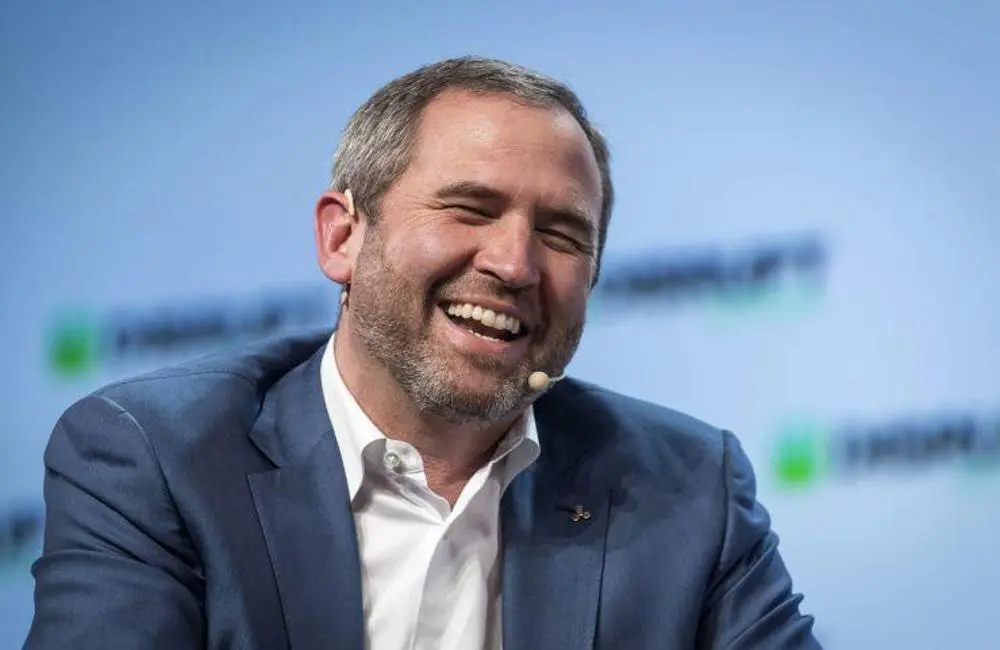- Banker’s $10 transfer delay sparks Ripple CEO’s strong liquidity defense.
- Garlinghouse stresses $50 billion liquidity and XRP’s 3-second settlement.
- Senate testimony spotlights Ripple’s mission and XRP’s real-world utility.
According to crypto commentator Amelie, a recent exchange between a banker and Ripple’s chief executive, Brad Garlinghouse, has caught wide attention. The banker cited a self-challenge when he was a fellow at the Bank of England, and when paying upfront rent was requested.
He pointed out that transferring money between the Bank of England and Centendaire UK incurred a fee of $10 and took an entire day to complete.
He pointed out the danger of such a procedure by emphasizing that the payment had no insurance throughout the waiting period. The banker also said that these problems could seem insignificant to some people, but they need to be addressed as soon as possible, especially by lower-income families.
In the same interview, he asked Garlinghouse about Ripple’s participation in providing liquidity. The issue of interest to him was whether Ripple could counter a run in case the market participants required liquidity but lost confidence.
Also Read: XRP Falling Wedge Measured Move Progress, See Targets
Garlinghouse Explains Ripple’s Technology Role
In his response, Garlinghouse clarified that Ripple does not directly supply liquidity to markets. He also highlighted the fact that Ripple provides technologies that bridge institutions to liquidity that exists in digital assets.
He underlined the strength of the crypto sector, pointing out that about $50 billion in liquidity had moved within 24 hours across digital assets like XRP, Bitcoin, and Ether. By mentioning these numbers, Garlinghouse tried to highlight the fact that the depth of liquidity goes far beyond a single company.
In his explanation, he stated that the concept of a run on Ripple was not very clear, since Ripple, as a concept, does not operate as a liquidity provider. Instead, he differentiated the technology framework of Ripple from the larger market of digital assets, the movement of liquidity, which happens daily and at enormous volume.
Furthermore, Garlinghouse emphasized the performance of XRP, stating that the settlement occurs in 3 seconds. His comment was the opposite of the situation of the banker who had to wait 24 hours for the traditional transfers.
Garlinghouse Highlights Ripple’s Mission and XRP Utility in Testimony
In July, Brad Garlinghouse presented his testimony before the Senate Banking Committee during a hearing titled “From Wall Street to Web3: Building Tomorrow’s Digital Asset Markets.” The discussion focused on the purpose of digital assets and how they would transform financial systems in the future.
Throughout his speech, Garlinghouse discussed Ripple’s role within the crypto ecosystem and how XRP can be utilized to solve real-world financial problems. He added that Ripple builds software that enables cross-border payment and stablecoins and aims to minimize friction and enhance efficiency among institutional customers.
He also highlighted the importance of the XRP Ledger, which he characterized as a decentralized and open-source blockchain that enables fast, low-cost, and scalable payments. To him, XRP will always be critical in Ripple’s mission to create an Internet of Value where money flows as freely as information.
Conclusion
The trade shows that settling in the old banking system continues to be slow and incurs extra expenses, whereas the chief executive of Ripple emphasized the effectiveness of XRP and the overall digital asset markets. It also demonstrated how Ripple continues to focus on its technology model rather than acting as a direct source of liquidity.
Also Read: Nemo Protocol Issues Debt Tokens After $2.6M Hack — Will Users Be Made Whole?
